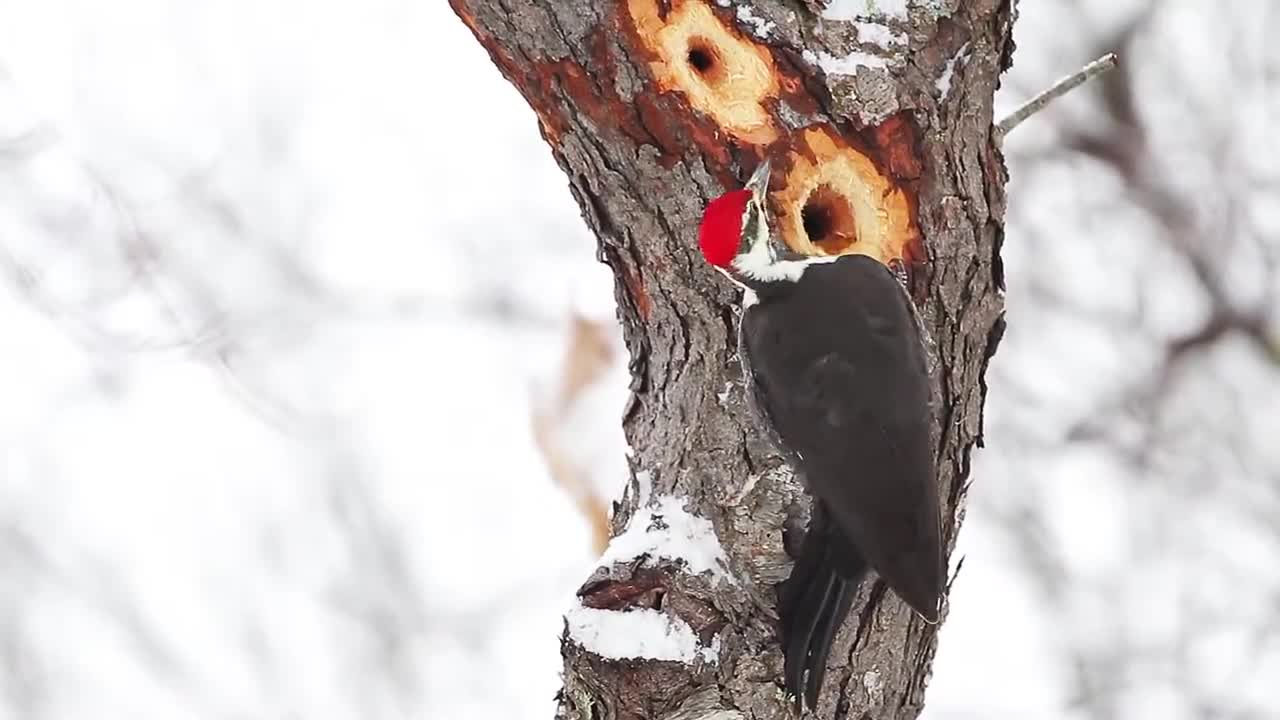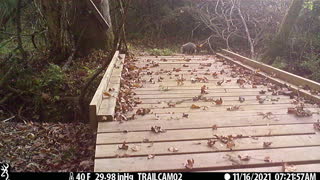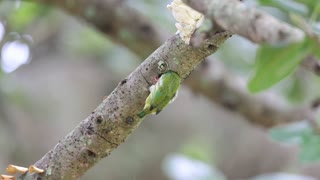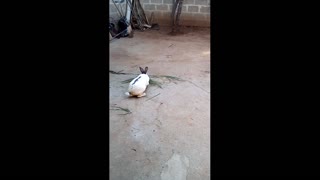Premium Only Content

The woodpecker is making a nest
Woodpeckers are birds of the order Piciformes. Found worldwide and includes a number of species, usually numbering 218 (including the Ivory-billed Woodpecker). Some woodpeckers in the order Piciformes have zygodactile feet, with 2 toes pointing forward and 2 backwards. The legs, while adapted for gripping on vertical surfaces, can be used for grasping or perching. Some species only have 3 toes. The long tongue found in some woodpeckers can be stuck out to catch insects. The woodpecker gets its name from the habit of some of its species tapping and pecking tree trunks with their beaks. It is a means of communicating territorial ownership by signaling to rivals, and a means of searching for and finding insect larvae under bark or long winding tunnels in trees. At first, woodpeckers search for tunnels by tapping the trunk. Once the tunnel was found, the woodpecker carved the wood until it created an opening into the tunnel. Then stuck his tongue into the tunnel to try to find the grubs. The woodpecker's tongue is long and hooked. With its tongue the woodpecker pierces the grubs and pulls them out of the stem. Woodpeckers also use their beaks to make larger holes for their nests about 15-45 cm (6-18 in) below the exposed surface. The nests are lined only with wood chips and contain 2-8 white eggs that the female lays out. Because out of sight, the nest is invisible to predators and the eggs don't need to be camouflaged. Cavities created by woodpeckers are also reused as nests by other birds, such as some ducks and owls, and mammals, such as tree squirrels.
-
 0:10
0:10
TigerRifle
2 years agoMaking a Nest
34 -
 1:00
1:00
RealPatriotCane
3 years agoA Coppersmith Barbet making a nest
33 -
 0:57
0:57
Bunnyful
3 years agoBunny making nest
22 -

LFA TV
22 hours agoJOE PARDONS HUNTER TO SAVE HIMSELF?! | UNGOVERNED 12.2.24 5pm EST
9.13K2 -
 3:49:26
3:49:26
JackknifeFinnegan
4 hours agoWELCOME TO RUMBLE, WELCOME TO FREEDOM
24.8K -
 LIVE
LIVE
China Uncensored
58 minutes agoSomething Has Gone TERRIBLY Wrong In China
176 watching -
 3:19:13
3:19:13
Yefune Kenizi's [PC] Gaming
3 hours ago $3.55 earnedGTAO - Diamond Casion Heist Week: Monday w/ GamingChad and Takumi
33.6K2 -
 1:57:20
1:57:20
The Quartering
5 hours agoJoe Biden's Insane Pardon Of Hunter & Trumps Response, Dr Disrespect Joins Rumble, Kash To FBI!
81.1K53 -
 11:04
11:04
Silver Dragons
4 hours agoCan This Silver Prediction Come True? Biggest Bank on Silver Price in 2025
18.9K1 -
 4:06:39
4:06:39
ttvglamourx
5 hours ago $6.80 earnedCALL OF DUTY SEARCH AND DESTROY !DISCORD
56.4K5